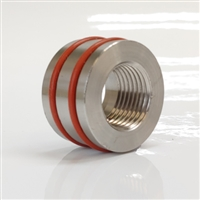Adam Zerwick
Well-Known Member
- Joined
- Apr 13, 2018
- Messages
- 78
- Reaction score
- 35
Brewed up a NEIPA this past weekend and hit 69% mash efficiency.
- 84% 2 row, 16% flaked oats
- Single crush at .045"
- No bag
- pH 5.25
- Tee off the pump to allow whirlpool and recirculation during mash
- 90 minute mash @150F with 10 minute mashout @170F
I was considering using a bag inside the basket for this batch but decided to try coarsening up my crush instead. I'll probably continue doing things this way but will need to figure out what to do about smaller grain kernels since .045" might not crush them.
- 84% 2 row, 16% flaked oats
- Single crush at .045"
- No bag
- pH 5.25
- Tee off the pump to allow whirlpool and recirculation during mash
- 90 minute mash @150F with 10 minute mashout @170F
I was considering using a bag inside the basket for this batch but decided to try coarsening up my crush instead. I'll probably continue doing things this way but will need to figure out what to do about smaller grain kernels since .045" might not crush them.












































![Craft A Brew - Safale S-04 Dry Yeast - Fermentis - English Ale Dry Yeast - For English and American Ales and Hard Apple Ciders - Ingredients for Home Brewing - Beer Making Supplies - [1 Pack]](https://m.media-amazon.com/images/I/41fVGNh6JfL._SL500_.jpg)

















